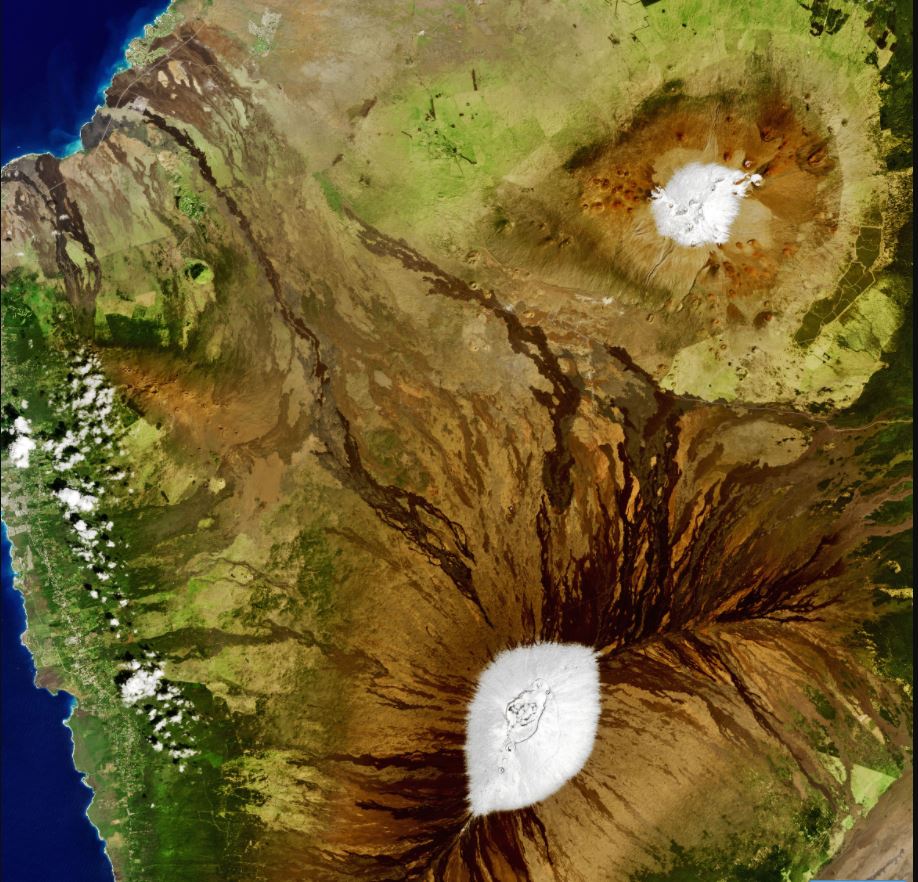The words “snow” and “Hawai’i” are not often mentioned in the same paragraph – or even on the same vacation. But snow does fall in Hawai’i almost every year, and 2021 has seen a deep cold front drop snow on the summits of Mauna Loa and Mauna Kea on the Big Island at least three times in the past few weeks – as well as on Haleakala on Maui. This means there are currently in snowcaps on Hawai’i’s three tallest mountains.
Continue reading “Three Storms Have Dumped Snow on Mauna Loa and Mauna Kea”This is the Habitat in Hawaii Helping Astronauts Preparing to Explore Mars
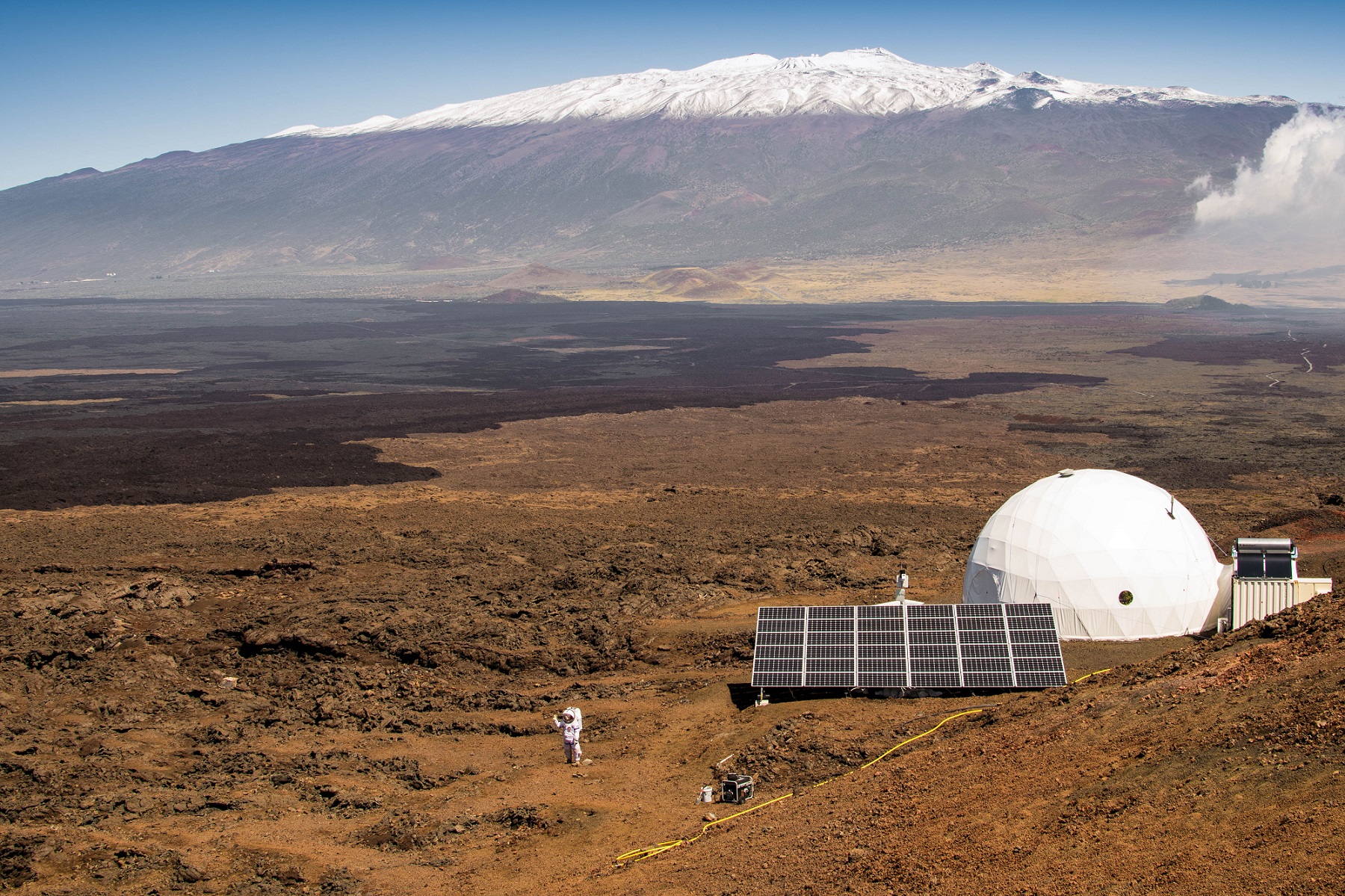
When it comes time to send astronauts to Mars, those who make the journey will need to be ready for a number of challenges. In addition to enduring about six-months in space both ways, the first astronauts to explore Mars will also need to be prepared to spend months living on the surface. This will consist of long periods spent in a pressurized habitat and regular forays to the surface wearing pressure suits.
Continue reading “This is the Habitat in Hawaii Helping Astronauts Preparing to Explore Mars”
10 Interesting Facts About Volcanoes
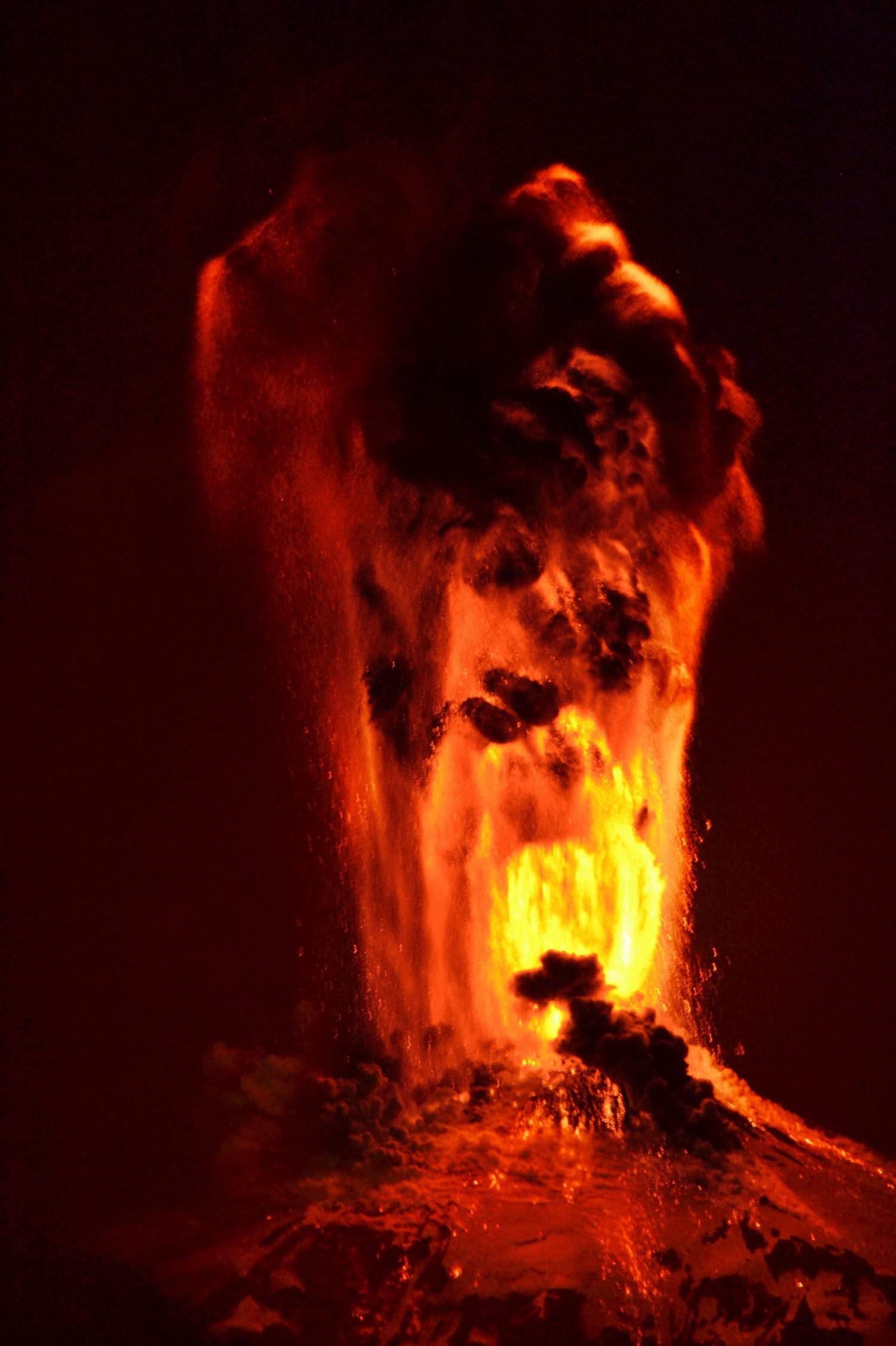
Want some volcano facts? Here are 10 interesting facts about volcanoes. Some of these facts you’ll know, and others may surprise you. Whatever the case, volcanoes are amazing features of nature that demand our respect.
1. There are Three Major Kinds of Volcanoes:
Although volcanoes are all made from hot magma reaching the surface of the Earth and erupting, there are different kinds. Shield volcanoes have lava flows with low viscosity that flow dozens of kilometers; this makes them very wide with smoothly sloping flanks.
Stratovolcanoes are made up of different kinds of lava, and eruptions of ash and rock and grow to enormous heights. Cinder cone volcanoes are usually smaller, and come from short-lived eruptions that only make a cone about 400 meters high.
2. Volcanoes Erupt Because of Escaping Magma:
About 30 km beneath your feet is the Earth’s mantle. It’s a region of superhot rock that extends down to the Earth’s core. This region is so hot that molten rock can squeeze out and form giant bubbles of liquid rock called magma chambers. This magma is lighter than the surrounding rock, so it rises up, finding cracks and weakness in the Earth’s crust.
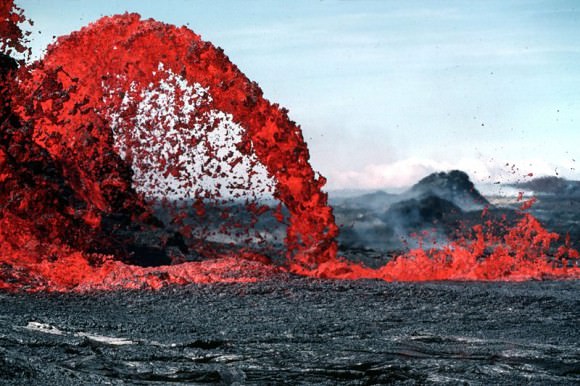
When it finally reaches the surface, it erupts out of the ground as lava, ash, volcanic gasses and rock. It’s called magma when it’s under the ground, and lava when it erupts onto the surface.
3. Volcanoes can be Active, Dormant or Extinct:
An active volcano is one that has had an eruption in historical times (in the last few thousand years). A dormant volcano is one that has erupted in historical times and has the potential to erupt again, it just hasn’t erupted recently. An extinct volcano is one that scientists think probably won’t erupt again. Here’s more information on the active volcanoes in the world.
4. Volcanoes can Grow Quickly:
Although some volcanoes can take thousands of years to form, others can grow overnight. For example, the cinder cone volcano Paricutin appeared in a Mexican cornfield on February 20, 1943. Within a week it was 5 stories tall, and by the end of a year it had grown to more than 336 meters tall. It ended its grown in 1952, at a height of 424 meters. By geology standards, that’s pretty quick.
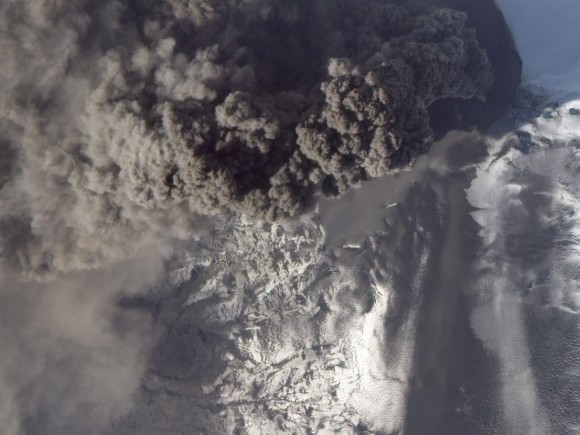
5. There are 20 Volcanoes Erupting Right Now:
Somewhere, around the world, there are likely about 20 active volcanoes erupting as you’re reading this. Some are experiencing new activity, others are ongoing. Between 50-70 volcanoes erupted last year, and 160 were active in the last decade. Geologists estimate that 1,300 erupted in the last 10,000 years.
Three quarters of all eruptions happen underneath the ocean, and most are actively erupting and no geologist knows about it at all. One of the reasons is that volcanoes occur at the mid ocean ridges, where the ocean’s plates are spreading apart. If you add the underwater volcanoes, you get an estimate that there are a total of about 6,000 volcanoes that have erupted in the last 10,000 years.
6. Volcanoes are Dangerous:
But then you knew that. Some of the most deadly volcanoes include Krakatoa, which erupted in 1883, releasing a tsunami that killed 36,000 people. When Vesuvius exploded in AD 79, it buried the towns of Pompeii and Herculaneum, killing 16,000 people.
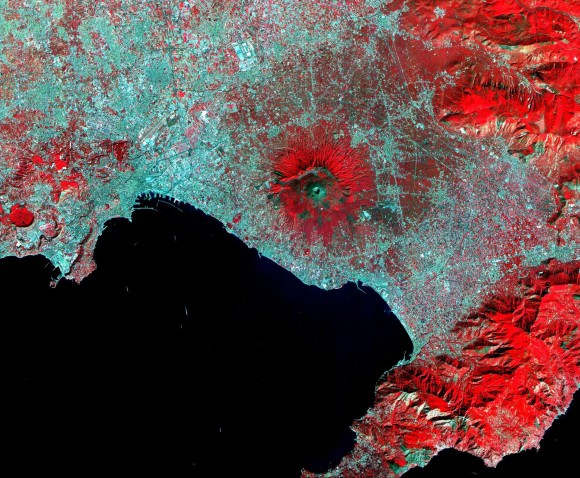
Mount Pelee, on the island of Martinique destroyed a town with 30,000 people in 1902. The most dangerous aspect of volcanoes are the deadly pyroclastic flows that blast down the side of a volcano during an eruption. These contain ash, rock and water moving hundreds of kilometers an hour, and hotter than 1,000 degrees C.
7. Supervolcanoes are Really Dangerous:
Geologists measure volcano eruptions using the Volcano Explosivity Index, which measures the amount of material released. A “small” eruption like Mount St. Helens was a 5 out of 8, releasing a cubic kilometer of material. The largest explosion on record was Toba, thought to have erupted 73,000 years ago.
It released more than 1,000 cubic kilometers of material, and created a caldera 100 km long and 30 kilometers wide. The explosion plunged the world into a world wide ice age. Toba was considered an 8 on the VEI.
8. The Tallest Volcano in the Solar System isn’t on Earth:
That’s right, the tallest volcano in the Solar System isn’t on Earth at all, but on Mars. Olympus Mons, on Mars, is a giant shield volcano that rises to an elevation of 27 km, and it measures 550 km across. Scientists think that Olympus Mons was able to get so large because there aren’t any plate tectonics on Mars. A single hotspot was able to bubble away for billions of years, building the volcano up bigger and bigger.
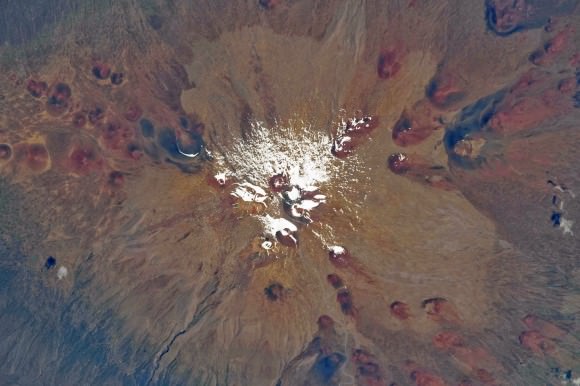
9. The Tallest and Biggest Volcanoes on Earth are side by side:
The tallest volcano on Earth is Hawaii’s Mauna Kea, with an elevation of 4,207 meters. It’s only a little bigger than the largest volcano on Earth, Mauna Loa with an elevation of only 4,169 meters. Both are shield volcanoes that rise up from the bottom of the ocean. If you could measure Mauna Kea from the base of the ocean to its peak, you’d get a true height of 10,203 meters (and that’s bigger than Mount Everest).
10. The Most Distant Point from the Center of the Earth is a Volcano:
You might think that the peak of Mount Everest is the most distant point from the center of the Earth, but that’s not true. Instead, it’s the volcano Chimborazo in Ecuador. That’s because the Earth is spinning in space and is flattened out. Points at the equator are further from the center of the Earth than the poles. And Chimborazo is very close to the Earth’s equator.
We have written many articles about volcanoes for Universe Today. Here’s an article that tackles about the 10 facts about earth’s core. You might also want to read on the 10 facts about earth. And here’s more: all about volcanoes.
Want more resources on the Earth? Here’s a link to NASA’s Human Spaceflight page, and here’s NASA’s Visible Earth.
We have also recorded an episode of Astronomy Cast about Earth, as part of our tour through the Solar System – Episode 51: Earth.
Reference:
USGS Volcano Hazards Program
Welcome to Mars! – Hi-SEAS and Mars Society Kick Off New Season of Missions
The Hawaii Space Exploration Analog and Simulation (aka. Hi-SEAS) – a human spaceflight analog for Mars located on the slopes of the Mauna Loa volcano in Hawaii – just kicked off its third research mission designed to simulate manned missions on Mars.
Located at an elevation of 2500 meters (8,200 feet) above sea level, the analog site is located in a dry, rocky environment that is very cold and subject to very little precipitation. While there, the crew of Mission Three will conduct detailed research studies to determine what is required to sustain a space flight crew during an extended mission to Mars and while living on Mars.
The six-member team includes Martha Lenio (Commander), Allen Mirkadyrov, Sophie Milam, Neil Sheibelhut, Jocelyn Dunn, and Zak Wilson, with Ed Fix and Micheal Castro in Reserve. This crew will spend the next 254 days living in conditions that closely resemble those present on the Martian surface.
Research into food, crew dynamics, behaviors, roles and performance, and other aspects of space flight and a mission on Mars itself is the primary focus. This will be the third of four research missions conducted by Hi-SEAS and funded by the NASA Human Research Program. The information gleaned from these research studies, it is hoped, will one day help NASA conduct its own manned missions to the Red Planet.
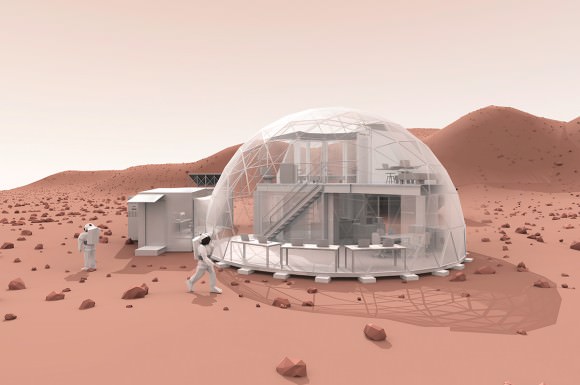
For the course of their research studies, the crew will be living in a dome that is 11 meters (36 feet) in diameter and has a living area of about 93 square meters (1000 square feet). The dome also has a second level that is loftlike – providing a high-ceiling is crucial to combating long-term feelings of claustrophobia.
The six crew members will sleep in pie-slice-shaped staterooms, each of which contains a mattress, desk and stool. Their clothing is stored under the bed, which sits at the wide side of the slice. They do their business in a series of composting toilets that turn their repurposed feces (the pathogens are removed) into a potential source of fertilizer for the next mission.
A workout area provides the astronauts with an opportunity to stay in shape with such exercises as video aerobics, juggling, and balloon volleyball. And communications are conducted through NASA-issued email addresses – with an artificial delay to simulate the time lag from Mars – and access to a web made of cached, nondynamic pages.
To complete the illusion of being on Mars, when the crew are not in their pressurized habitation dome, they will be walking around in space suits. The mission will conclude on July 14th, 2015, with a fourth and final mission to take place at a so-far undetermined date.
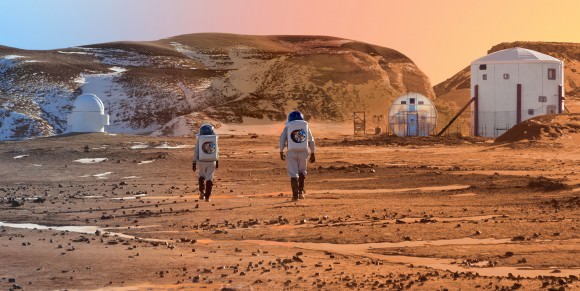
Credit: Mars Society MRDS
In related news, the Mars Society announced yesterday that Crew 142 arrived at the Mars Desert Research Station (MDRS) in southern Utah to begin the 2014-15 MDRS field season. Crew 142, consisting of seven people, is the first of three crews composed of finalists for the planned Mars Arctic 365 (MA365) mission that will serve at MDRS for two weeks of training and testing.
Once their training is complete, crew 142 will be shipping off to the Flashline Mars Arctic Research Station (FMARS) located on Devon Island in northern Canada, followed shortly behind by the other MA365 finalists, for a year-long research stint.
Much like the Hi-SEAS project, the Mars Society is a non-profit space advocacy organization that is dedicated to promoting the human exploration and settlement of Mars. Established by Dr. Robert Zubrin and colleagues in 1998, the organization works to educate the public, the media, and government on the benefits of Mars exploration and the importance of planning a manned mission in the coming decade.
For the next two weeks, the seven finalists will be engaged in activities designed to simulate conditions on another planet. For the duration, they will be living and working in the Mars Analog Research Stations (MARS) – a prototype of the habitat that the Mars Society plans to eventually land on Mars and serves as the crew’s main base as they explore the harsh Martian environment.
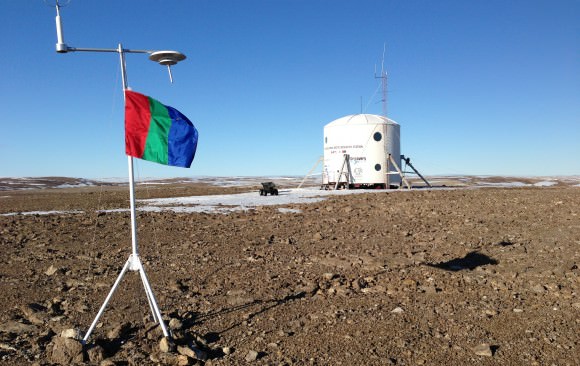
Ultimately, these analog experiments offer NASA and other space research groups the opportunity to carry out field research in a variety of key scientific and engineering disciplines that will help prepare humans to explore Mars in the coming years.
For one, it lets research crews know what kinds of work they can physically do when fully suited up, and just how well their suits can hold up to months’ worth of activity. At the same time, it allows for psychological studies and human factor issues – like testing the effects of isolation on human beings, and whether or not the habitats will suffice for long periods of occupation.
Above all, it lets us see how human beings with different skills sets and tasks can function together as a whole in a Martian environment. On any given day, astronauts in these analog environments are tasked with working within the pressurized habitats, out in the field, or far away using pressurized rovers or un-pressurized vehicles.
At the same time, it offers the opportunity for research crews to test out being in an isolated environment, connected to mission control and the terrestrial scientific community only through official communications.
And of course, there’s also the matter of the astronauts’ being connected to each other and robots in the field. Making these different assets work together to achieve the maximum possible exploration effect requires developing a combined operations approach, which is another aim of Hi-SEAS, the Mars Society, and other research groups.
Further Reading: Hi-SEAS, Mars Society

